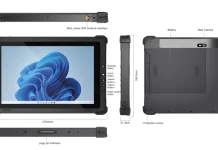Introduction
In the world of custom embroidery, the digitization of logos plays a pivotal role in achieving precision and excellence. Whether you’re a business owner looking to enhance your brand’s visibility or an embroidery enthusiast seeking to create unique designs, mastering the art of logo digitizing is essential. This comprehensive guide will take you through the intricacies of the process, providing valuable insights to help you achieve stunning embroidery designs.
Understanding Logo Digitizing
Logo digitizing is the process of converting a logo or artwork into a digital format that embroidery machines can interpret. This digital file contains instructions for the embroidery machine to recreate the design with precise stitches and colors. The goal is to maintain the integrity of the original logo while ensuring it translates seamlessly into the embroidered medium.
Key Steps In Logo Digitizing
- File Preparation: Begin by obtaining a high-quality image of the logo in a common digital format, such as JPEG or PNG. A clean and well-defined image will facilitate the digitization process and result in a more accurate representation.
- Choosing the Right Software: Invest in quality embroidery digitizing software. There are various programs available, each offering unique features. Some popular choices include Wilcom, Hatch, and Pulse. Familiarize yourself with the tools and capabilities of the selected software to optimize the digitization process.
- Digitizing Techniques: Understand the different digitizing techniques, such as fill stitches, satin stitches, and running stitches. Each technique serves a specific purpose in creating texture, dimension, and detail in the embroidered design. Experiment with these techniques to enhance the visual appeal of your logo.
- Color Matching: Accurate color representation is crucial in logo digitizing. Use the color palette provided by your embroidery software and ensure it aligns with the original logo’s colors. Pay attention to thread choices, as they contribute significantly to the final outcome.
- Stitch Density and Length: Adjusting stitch density and length is essential for achieving the desired texture and clarity in the embroidered design. Experiment with these settings to find the right balance, considering the type of fabric and the size of the design.
- Test Runs and Adjustments: Before finalizing the digitized logo, conduct test runs on scrap fabric. This allows you to identify any potential issues and make necessary adjustments to optimize the design’s appearance.
Enhancing Security Measures with a Leading Mississauga Company
Conclusion
Mastering logo digitizing services is a skill that opens the door to limitless creative possibilities in the world of embroidery. By understanding the key steps and techniques involved, you can transform ordinary logos into stunning embroidered designs. Whether you’re a novice or experienced embroiderer, this comprehensive guide serves as a valuable resource to elevate your logo digitizing proficiency and bring your creative visions to life.























![InstaPro APK Download Latest Version 2023 [Anti Ban]](https://olo.my.id/wp-content/uploads/2023/10/instapro-100x70.jpg)